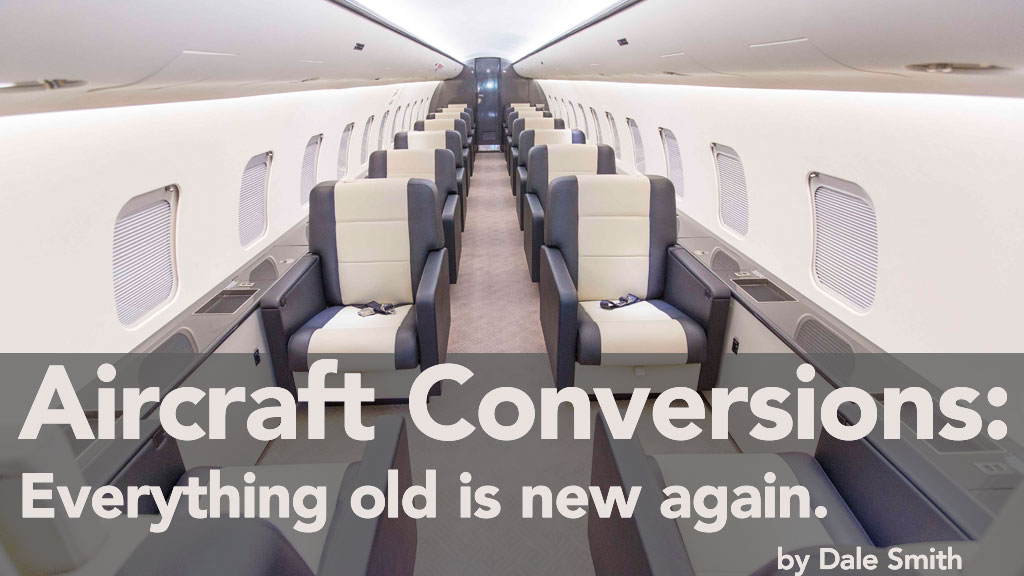With a business model built largely on delivering the lowest cost, the world’s air cargo operators are relying on the inherent savings and efficiencies that come with converting retired airliners into hard-working ‘freight dogs.’
Welcome to the Access Generation powered by the Internet and the global explosion of e-commerce. With the press of a finger you can order anything from a bouquet of roses to
a shipping container full of rose bushes and have them on your doorstep the next morning.
Much of that on-demand deliverability is due to the world’s rapidly growing fleet of air cargo aircraft. And it’s only going to get bigger. In fact, according to a Boeing report the air cargo industry will grow at 4.2 percent over the next 20-years.
In terms of the number of additional airplanes, Boeing’s report states that a mix of 930 new and 1,440 converted freighters will be needed to meet market demand by 2035. That’s nearly a 70 percent increase in the size of the global freighter feet.
The forecast breaks that down into a fleet comprised of 550 new large production freighters, 380 new production medium wide bodies, 400 wide-body conversions and 1,040 medium converted freighters. (Interestingly, the Boeing forecasts didn’t mention the smaller regional-type aircraft that will be needed to fill the very short haul feeder routes. Probably because they don’t make those types any longer.)
But no matter how you slice it up, 1,440 of any airframe mix is a lot of passenger-to-freighter (P2F) conversions and that means this segment of the market is looking pretty good right now.
“The conversion market is very good right now and all of our lines are full for the rest of this year,” stated Mike Andrews, director of conversion programs, PEMCO World Air Services. “We’ve been in the conversion business for over 20 years and have done over 350 of them. Right now we only do 737-300 and -400 conversions and we’ve converted a total of 130 so far.”
“We probably cover 60- or 70-percent of the smaller narrow-body conversions today,” he said. “The 737 is a very good ‘feeder’ freighter. The -300 will carry about 43,000 pounds of cargo and the -400 will carry up to 46,000 pounds – both have about a 2,500 nautical mile (nm) range.”
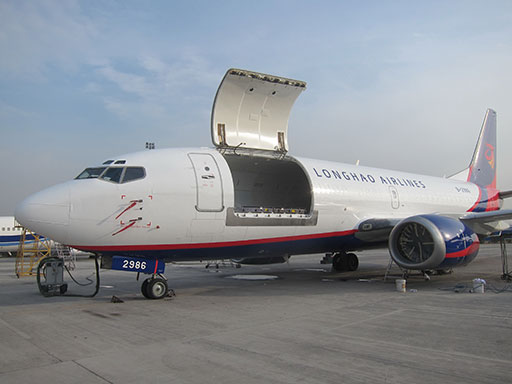
Gary Warner, president of Precision Aircraft Solutions, said that his company is also experiencing an “up” market right now. Like PEMCO, Precision Aircraft Solutions performs P2F conversion on only one airframe type – in their case it’s the venerable Boeing 757-200 series.
Warner also stated that much of the growth in conversions around the world could be linked to the growth of e-commerce and the rapid delivery demands of the e-tailers’ Access Generation customers.
“ATSG and Atlas have been buying and converting 767s to fill the needs of e-commerce giant Amazon,” he said. “And in the narrow-body segment, China is seeing an incredible boom in demand for freighters. Chinese e-commerce giants like Alibaba and JD.com are currently driving the need for volume freighters like the 757.”
“To date, we have converted 73 B757-200 PCF (Precision Converted Freighters) and we currently have another seven in work,” he said. “The 757-200PCF has reached maturity and remains in high demand across the globe. As a heavy-lifter it bridges the gap between the largest narrow-body and smallest wide-body freighters.”
Of course like everything in aviation, there’s a dark cloud lurking behind the silver lining that the current P2F business is experiencing – namely, the dwindling supply of good, low-time airliners to convert.
P2F conversions: Only the best need apply
“When it comes to a conversion, we look for an airframe with relatively fewer cycles than normal,” Andrews said. “With a 737 having a ‘lifespan’ of some 70,000 cycles, we’re look for a sweet spot of around 35,000. That gives the airplane a good life as a freighter.”
As for the 757-200, Warner said that the typical conversion candidate is 15-years old with less than 30,000 cycles. That would typically give a 757-200PCF upwards of a 15-year useful life as a freighter before the aircraft reaches its Limit of Validity (LOV) for flight hours/or cycles.
And no matter the airframe type, as you may well expect, the number of cherry airframes is getting fewer and farther every day.
“Operators of older aircraft like legacy 727s and early 737s and 757s variants are realizing that the window of opportunity to convert ideal feed stock for the 737-300, -400 and 757-200 is closing,” Warner said. “If they choose not to capitalize on today’s available opportunities, they could be forced to operate their older aircraft until next-generation freighters like the A320/321 become available.”
“Of course, everything has a sweet spot,” Andrews stated. “As the airlines are still actively using their 737-300s and -400s while they await the new 737MAX, but when those airframes come off the line, they become available for conversion. That can be good for our business.”
But, sooner or later – and with the rapid expansion of e-commerce around the globe – it will be sooner, air freight operations are going to need to transition to the next-generation of conversion-grade freighters. And as Warner explained it, Precision Aircraft Solutions and, no doubt, other P2F conversion companies are already working on their preparations for that day.
“We expect demand for the 757-200 to decline over the next five- to seven-years in favor of the next-generation narrow-body freighters such as the A321,” he said.
So the time is pretty much right for the P2F conversion providers to get working on which airframe(s) they will bring to market.
“We talk to customers, review aircraft types and get an understanding of the general operating costs – including all the maintenance costs – of a particular aircraft type,” Warner said. “The big difference now is we are are also looking at the materials the OEM’s are using in the fuselages, the structural design concepts of each aircraft, and the various subsystems.”
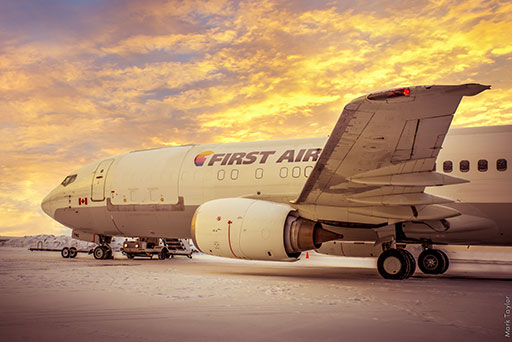
“These newer aircraft have more integrated systems than the older versions. I’m not talking about fly-by-wire, I’m talking in general about the various computer systems on these airplanes,” he said. “There is definitely a transition from a structural/maintenance aspect of a conversion project to it now being very much a structural/maintenance/systems conversion.”
The right airplane is just the beginning.
Once upon a time, the typical P2F conversion was little more than ripping out the interior, painting over the windows and cutting a hole in the fuselage for the cargo door. Not today. These are highly sophisticated aircraft that require equally involved approvals in the form of, in a U.S. carrier’s case, a FAA Supplemental Type Certificate (STC).
Warner explained that in Precision Aircraft Solutions’ experience from start to finish it’s about a 36-month process to do all the engineering, outfit the first airplane and earn the approvals. But it all starts with figuring out how a conversion program will come together for a particular aircraft model.
“There are two ways to get the engineering information you need,” he said. “One is to use OEM data under contract and the other is to do first-principle, reverse-engineering on an actual aircraft. Both are equally legal, but they are obviously very different ways to go.”
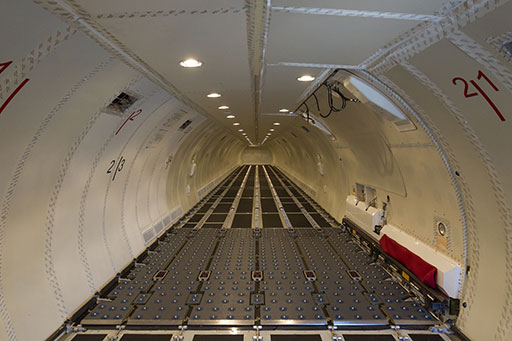
“We have chosen to go the first-principle, reverse-engineering method. So the first thing is we need a launch aircraft,” Warner said. “We also contract with one of our MRO ‘partners’ to do the work. It’s important that they have a hanger they can dedicate to the aircraft. It’s going to be on the ground for about two-years as it goes through all the survey, design, installation and STC approvals work.”

(Photo: Precision Aircraft Services)
“Once the aircraft is in the MRO’s hanger, the first step of the process is to remove the passenger interior, then the survey and measure the interior space,” he said. “We also perform the same steps on other aircraft to develop a very sound level of geometrical data on the type.”
“We use that as the basis for the conversion’s structural design and then move into a more detailed understanding of the external load factors on the airframe,” Warner added. “We then use that to develop our finite element model of the aircraft and design concepts for the systems changes. It’s all an effort to de-risk the program.”
Warner explained that along with all the work preparing the first article aircraft for the P2F conversion STC, nine-times-out-of-10 the aircraft’s owner is going to have a heavy check performed by the MRO. So when the aircraft is re-delivered at the end of the STC/conversion process the close it all out, sign the logbook and return the aircraft to service with everything completed.
“We can also go so far as to put the aircraft on a low-utilization maintenance program, which will give the operator a little more time on the airframe,” he said. “It takes into account the differences between the aircraft operating as a passenger airliner and now as a lower-utilization freight carrier.”
Once the STC and other appropriate international approvals, (depending on where the aircraft will operate) are in hand, it takes PEMCO and Precision Aircraft Solutions about 90-days to perform a typical conversion.
“That includes installing our proprietary hydraulic cargo door, reinforcing the floor structure where needed and installing the cargo loading system,” Andrews said. “We have all the required hardware and materials pre-kitted up and with that it’s a pretty straight forward process.”
P2VIP conversions are taking off too.
While passenger-to-freighter conversions make up by far the lion’s share of the market, there’s a growing trend for converting commercial aircraft into upper-end business and VIP jets. Flying Colours Corp., has grown to be a leader in this segment by working their magic to turn “retired” Bombardier (Canadair) Regional Jets (CRJs) into what they’ve branded as their CRJ ExecLiner Conversion series.
“The current market for executive conversion programs remains buoyant,” stated Flying Colours Executive Vice President, Sean Gillespie. “From our perspective, by far and away the most popular aircraft we see being converted is the Bombardier CRJ200. We have worked on the CRJ700 and 900 also, but the 200 is the most popular.”
While the CRJ-family are the current favorites for the company’s conversions, Gillespie said that other types including the Embraer 135 and Donnier 328 are prime candidates for a conversion program.
And, much like the P2F conversion market, Gillespie says that Asia is currently the most active region for P2VIP conversions. “We recently delivered two ExecLiners to ResortsWorld of Malaysia and we’re also working on an ongoing program of CRJ200 conversions for the Chinese company Sparkle Roll,” he said. “When those eight aircraft are converted they will represent a mix of shuttle and executive VIP conversions.”
“Right now we are also seeing an increase in requests from the North American market, which to some extent reflects the current sales landscape,” Gillespie said. “A reconfigured ExecLiner can often fulfill the needs of an owner at a lower budget and a shorter delivery time.”
Gillespie said that like any executive completion, each ExecLiner starts with an inspection of the aircraft. “For us the key factor when considering an airliner for conversion is the number of hours the aircraft has flown,” he explained. “A CRJ with low engine time, low hours in the air, and a good pedigree in terms of maintenance, really can offer a good alternative to a pre-owned business jet.”
“From there we create the maintenance schedule to manage any required upgrades or overhauls to the airframe and systems. We also begin the engineering process to design the interior conversion to meet the owner’s needs,” Gillespie said.
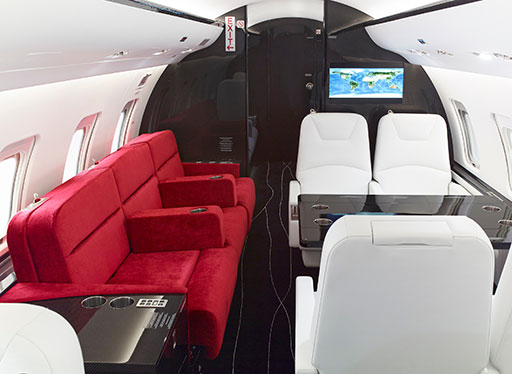
“We then go through the installation, completion and delivery process on the aircraft,” he added. “The whole process can take anywhere from four to 10 months, depending on the overall condition of the aircraft and complexity of the interior and any modifications we have to make.”
While a “standard” ExecLiner features a top-end cabin completion, Gillespie said that their customers have come up with some pretty exotic requests. “We had a client who was keen on having a pivoting bed, which required some unique engineering,” he said. “Even on a pretty standard interior, the design engineering can be challenging, but that’s what we do. We have many years of experience in solving these unique challenges.”
